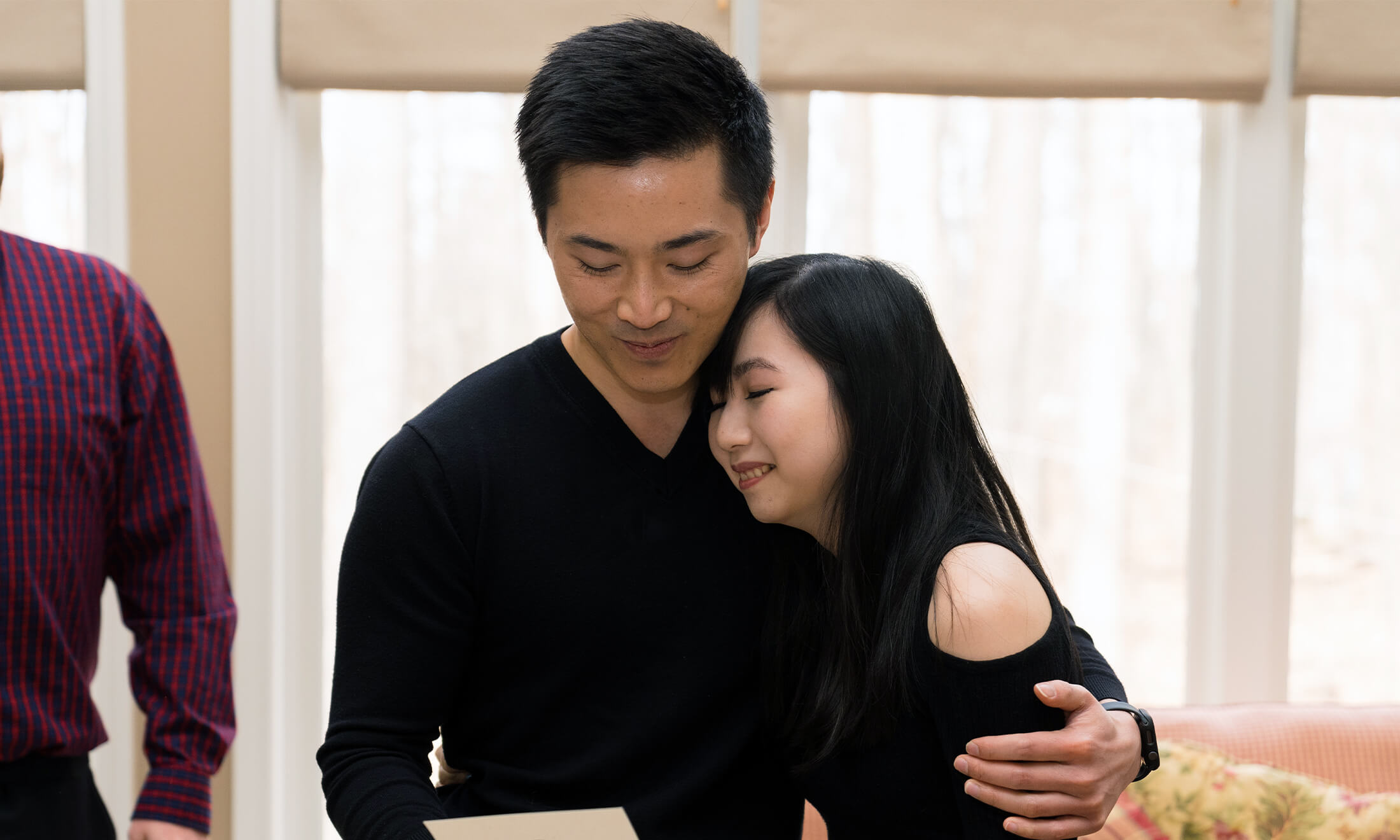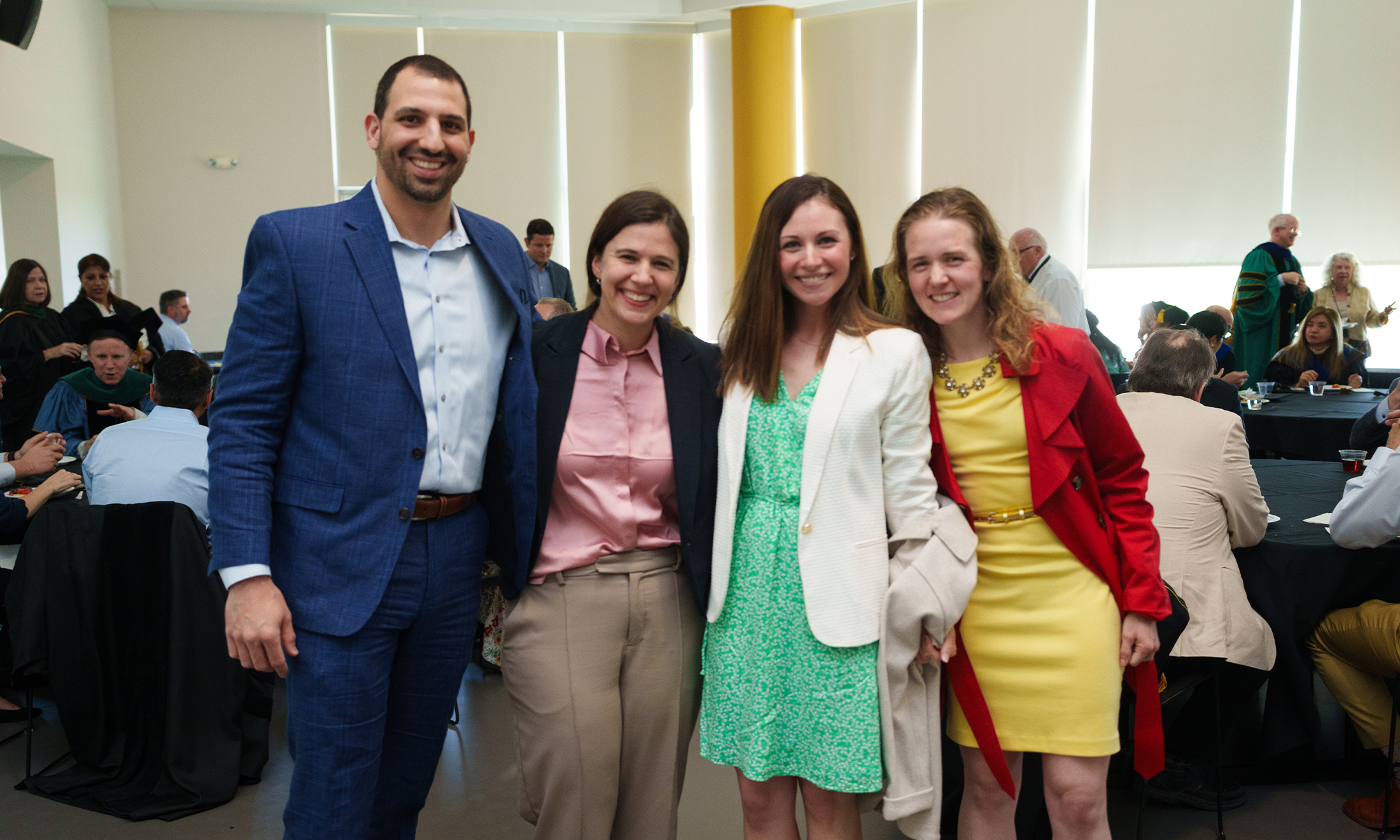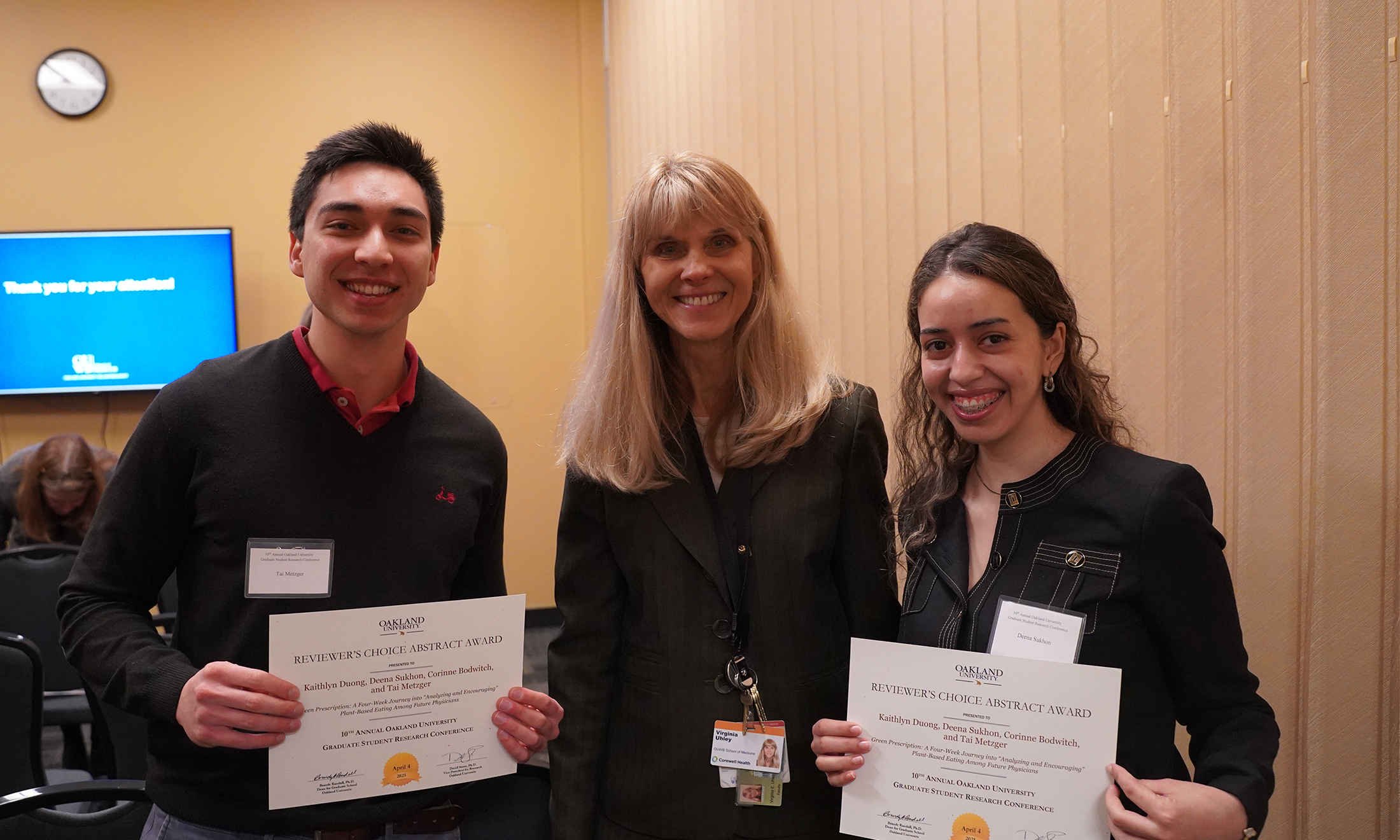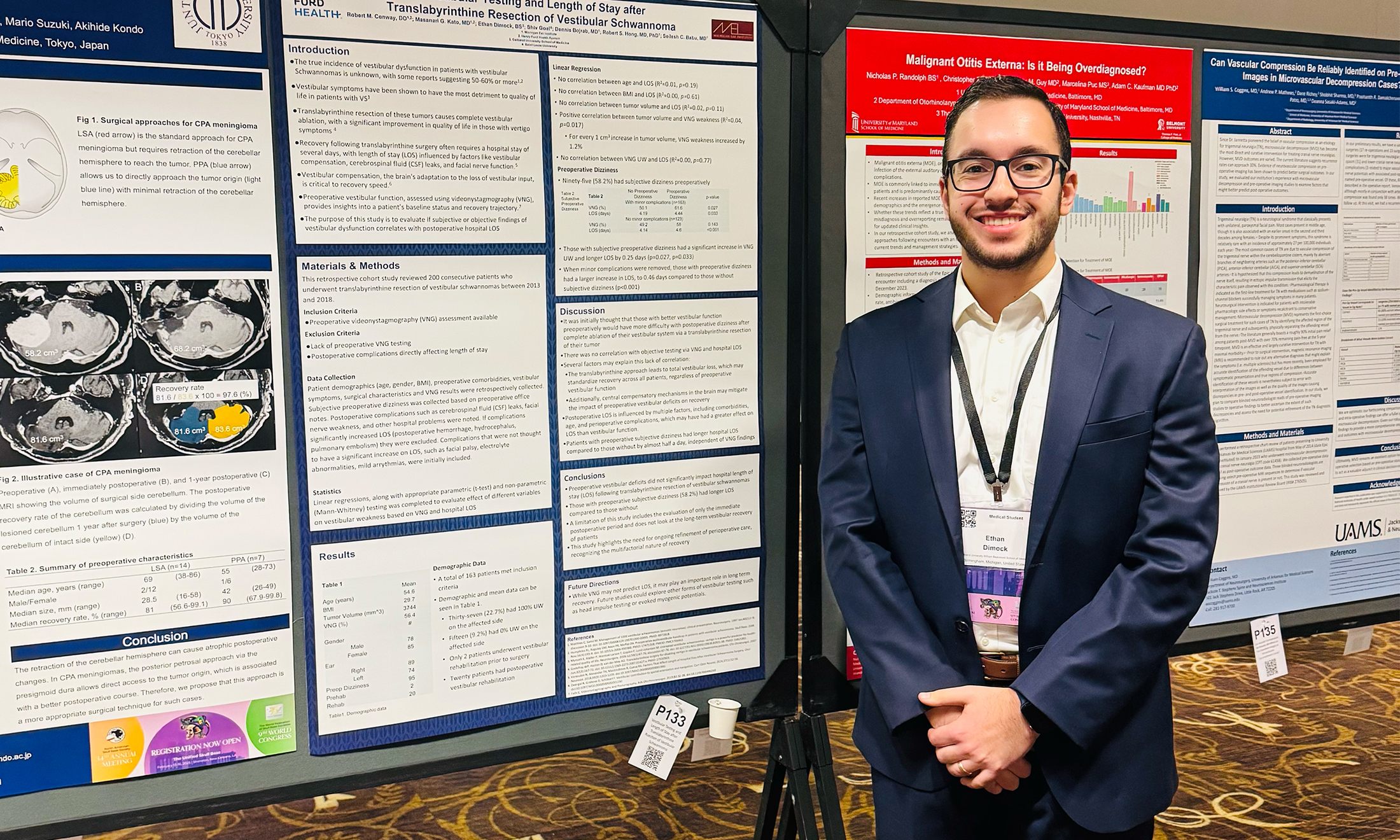Match made in Rochester
OUWB Class of 2022 alumni successfully navigate couple match process
The period leading up to Match Day is generally tense for all medical students, but it was especially taxing for two OUWB Class of 2022 graduates.
When the big day finally arrived, however, it was all big hugs, huge sighs of relief, and tears of joy for the new doctors — Alan Nguyen, M.D., and Patricia Rusli, M.D.
That’s because the recent OUWB graduates successfully took on the tough challenge of a couple match.
They soon will start residency at The Ohio State University Wexler Medical Center. Not only that, but they share the same specialty — anesthesiology.
“I was overjoyed to the point of tears,” says Nguyen.
“It was one of the best feelings I’ve ever had in my life,” says Rusli. “The couple match was definitely a stressful process and to know that we actually made it — especially in the same specialty — that was really, really special.”
Couples match
A couple match allows any two applicants to be matched with residency programs in the same geographic area. The applicants can be married, domestic partners, dating, friends, siblings — so long as they both agree to engage in a couple match.
The residency match timeline is the same for a couple matching as it is for individuals.
Medical students begin putting their applications into the Electronic Residency Application Service (ERAS) in June of their third year. On Sept. 15, applications are released to the various residency programs. Interviews generally take place between November and January. Students then have until late February to place their rank order lists into the National Resident Matching Program (NRMP) where the final match is determined. Match Day is the third Friday of March.
There are extra steps for those who decide to pursue a couple match.
First, applicants notify NRMP that they plan to pursue a couple match. Then, the couple must decide on how many programs, and where, they will apply. Typically, a couple trying to match together applies to significantly more programs with hopes to increase their success as a duo.
Even so, a couple match doesn’t guarantee the two individuals will match as a pair.
For most, however, it does guarantee a lot of stress.
“Matching in general is so anxiety-inducing,” says Rusli. “You don’t know where you’re going to match, or if you’re even going to match…and then times that by two.”
Meeting in Michigan
Nguyen and Rusli met each other in 2018, during a cold, February interview day at OUWB. Both originally from California — and both undergrads at University of California-Davis who didn’t know each other previously— the two hit it off.
“Then we saw each other again during (orientation) and just started talking to each other as friends,” says Nguyen.
They bonded over being from the Golden State, going through their first blizzard together, and over other things, too: love of different food cultures; of nature; of sightseeing; and both with an affinity for trying new things.
“That commonality just made things really work,” says Nguyen. “Along with having a similar sense of humor.”
By the end of 2018, the two were dating.
Rusli says there are many positive aspects of two medical students dating while in med school.
One of the biggest, she says, is the understanding both have for the amount of required studying.
Nguyen says another benefit is being able to bounce questions about different classes and clinical experiences off each other.
“If someone is missing a piece of information, the other one could always fill it in…this really helped for rotations,” he says.
They could share experiences about what it took to be successful, how to best take notes or present a history, exchange tips and tricks for specific clinical practices, how to speak with certain attendings, and so on.
“Having that secondary opinion really helps,” says Nguyen.
“We studied together all the time,” adds Rusli.
The only other real downside, says Nguyen, can be the long shifts that can keep couples from each other for long periods.
“You barely see the other person for an entire week sometimes,” says Nguyen. “But that makes the time spent together even more worth it.”
Communication is key
Though they had talked about it often, Nguyen and Rusli officially decided to pursue a couple match last summer, after they had received Step 2 scores and knew that their applications would look similar.
They say communication is critical in all steps of the process.
If one person received an invite for an interview and the other didn’t, for example, the individual who received the invite would reach out and explain that they are pursuing a couple match.
They also communicated to interviewers that they were not only pursuing a couple match, but also in the same specialty.
And they communicated with each other to create rank lists. Some say this is the most difficult part of the process because applicants are essentially wedding their credentials. That means if a partner is a less competitive applicant than the other, the more qualified person might not be matched with a most desired program.
There can be up to 300 pairings. It might sound like a lot, but if each individual does 20 interviews, that’s 400 possible pairings.
Nguyen says he and Rusli created a spreadsheet with their individual rankings and would frequently revisit the list to work through the options.
“Every weekend we would spend at least two to three hours talking through our lists and making sure that we were comfortable with it,” he says.
It was difficult at times, says Rusli, because — even though it was on the lowest portions of their rankings — they did have to think about the possibility of being on the opposite sides of the country.
“That was really, really hard to create that rank list,” said Rusli. “You get to a point where you don’t really like the pairing, but you still put it because at the end of the day, you still want to match.”
‘It hits you’
Nguyen and Rusli were among a small group of OUWB students who gathered in an apartment on Match Day (the event was held virtually for the third consecutive year because of COVID-19). Though students were informed of their match via email, one of the student’s family members printed out the information to put into envelopes to create the feeling of a traditional reveal.
Nguyen and Rusli opted for a slow reveal rather than a “rip the Band-Aid off” approach.
“So we asked each other if we matched at one of our top choices if it was in a certain part of the country, and if the name of the university starts with a certain letter,” says Nguyen. “Once you go three for three it hits you.”
After matching as a couple, Nguyen and Rusli almost immediately began apartment hunting in Columbus. Concurrently, they began the onboarding process for their residencies. In late April, they went to Hawaii. Their vacation preceded OUWB’s Commencement in mid-May.
Just about the only thing they still haven’t quite figured out is when they will get married.
“We’ve talked through it,” says Nguyen. “Ideally, we want to gain some financial stability…and that’s when things will really pick up and happen.”
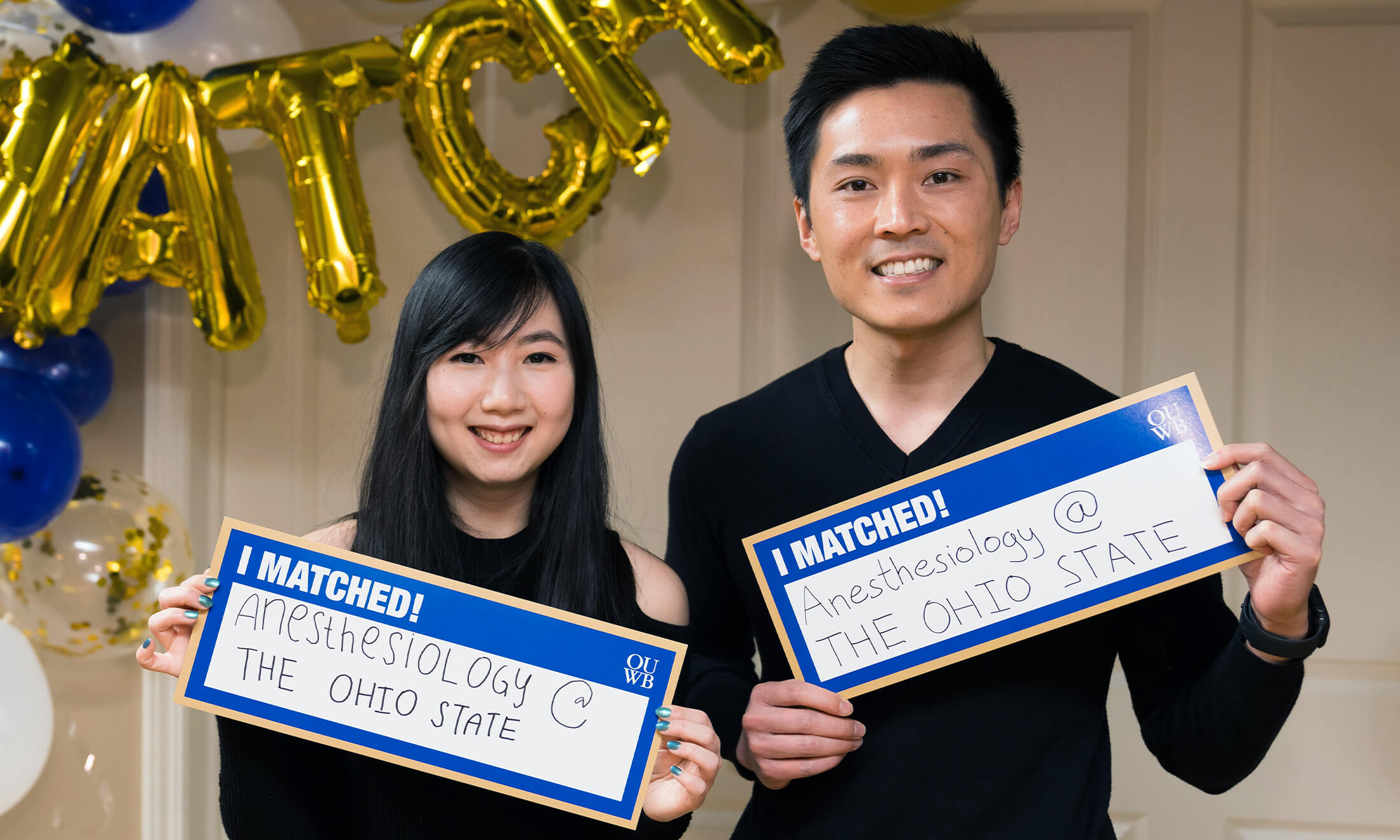
 July 06, 2022
July 06, 2022
 By Andrew Dietderich
By Andrew Dietderich